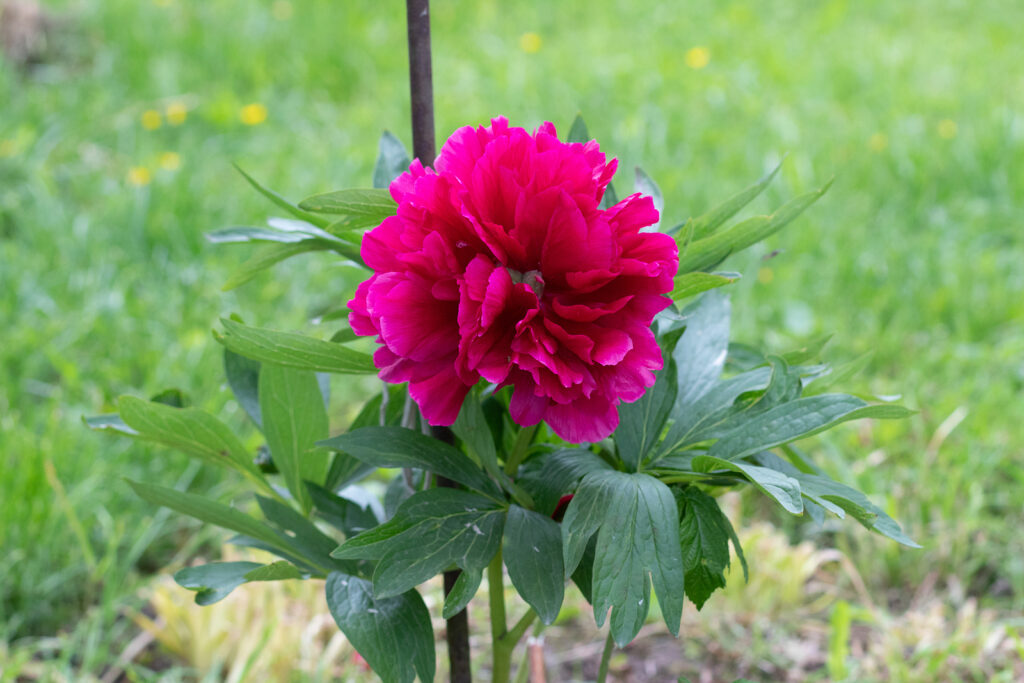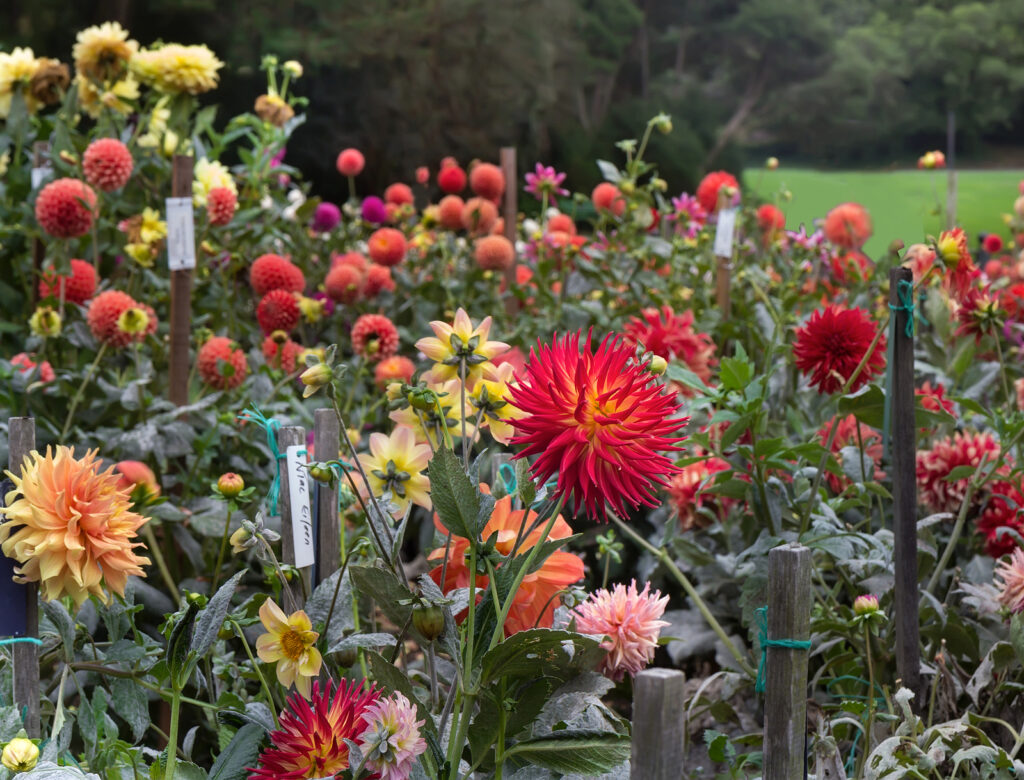Staking is a way to support tall and rangy plants. Stakes keep plants from bending and breaking and they also keep foliage from brushing the ground.
Staking includes keeping individual plants off the ground with a single stake or with several.
It’s best to put stakes into position as soon as the seed is sown or when plants are very young. When staking is delayed there is a risk of injuring plant roots, a risk that increases every day as the roots increase.
Stakes should be chosen in relation to the height and size of the plant at maturity as well as the exposure and the strength of prevailing winds.

In the herbaceous border bamboo canes of finger thickness or less are often sufficient and desirably inconspicuous. For hollyhocks and delphiniums larger bamboo sticks up to an inch in diameter at the base and 6 feet tall may be required. For dahlias, a one-inch-square stake 6 to 8 feet (1.8-2.4m) long, to be set 1 to 2 feet (.3-.6m) deep is often used. A fairly successful alternative is made of two or three slender bamboo canes bound together at two or three points with copper wire.
Choose stakes that are dark or natural colored rather than shiny metal or white. Dark and natural colors will not detract from the form of the plant and color of the blooms.
Use soft stretchy material to tie the plant into place; soft material will prevent damage to the stems. Strips of cloth, garden twine, and elastic horticultural tape make good ties. Avoid cinching ties too tight; plant stems should be able to move gently in a breeze.
Staking keeps foliage off the ground where moisture can cause disease.
If stakes have sharpened ends, be sure they are set away from the dripline if the plant is mature when the stakes are put in place. Roots can be severed or injured when pointed stakes are driven into the ground.

Other supports
Apart from stakes, other ways to support flowering plants
- A fencelike structure with stakes and twine will keep bushy plants upright and keep them from bending and leaning.
- Round metal grids on legs can support bushy flowers such as peonies, yarrow, and asters; the plants grow up through the grid support.
- Twiggy branches can be used as stakes; they have a natural look. Set twiggy branches among low-growing vining plants such as sweet peas and bush morning glory.















